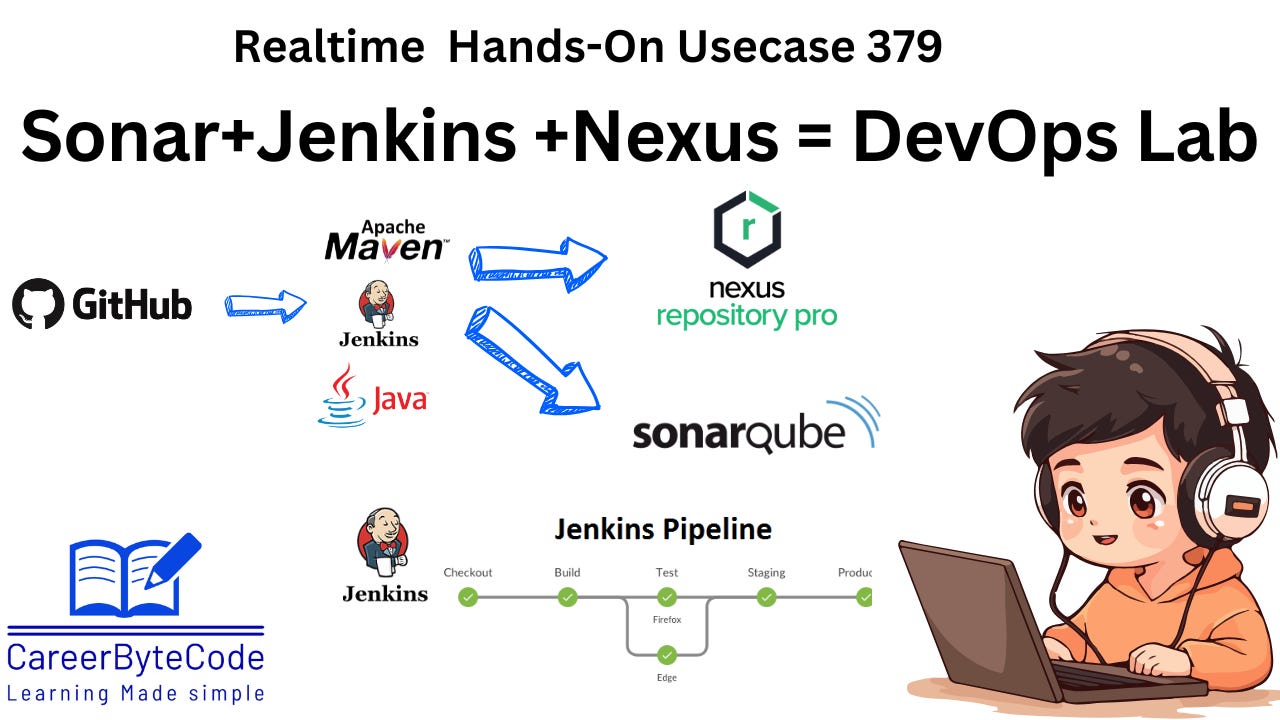Jenkins pipeline with SonarQube integration, publishing artifacts to Nexus.
Building a Scalable Jenkins Pipeline Integrated with SonarQube and Nexus for Version-Aware Artifact Management
1. Problem Statement:
In modern DevOps-driven environments, delivering high-quality, version-controlled software rapidly is crucial. Manual build, test, and release processes often lead to inconsistencies, security risks, and delayed deployments. To overcome this, organizations implement Continuous Integration and Continuous Delivery (CI/CD) pipelines that ensure automated builds, code quality checks, and artifact management.
However, a significant challenge lies in setting up a production-grade CI/CD ecosystem from scratch that supports:
Automated code quality analysis
Version-controlled artifact management
Seamless integration of developer workflows
Enforcement of proper version tagging for artifact traceability
2. Why We Need This Use Case
In the modern DevOps landscape, Continuous Integration and Continuous Delivery (CI/CD) are at the heart of delivering high-quality software faster. A properly configured CI/CD pipeline ensures:
Rapid feedback through code analysis
Automated build and testing
Reliable artifact publishing for version control
Seamless developer workflows
Manual processes for these steps often result in:
Missed code quality checks
Undocumented or inconsistent artifact versioning
Delay in feedback cycles
Security risks due to unverified code in production
This use case addresses the automation of a production-grade CI/CD pipeline using:
Jenkins (Build & Orchestration)
SonarQube (Code Quality Analysis)
Nexus (Artifact Repository)
It promotes version discipline, enables traceability, and ensures continuous quality assurance, making the pipeline robust, scalable, and production-ready.
3. When We Need This Use Case
You need this setup when:
Your team is building Java-based applications with Maven.
There’s a need for a centralized code quality gate before releasing artifacts.
You want to version-control all builds, either as production releases or development snapshots.
Your organization is adopting DevSecOps practices and wants traceability in artifact flow.
You’re deploying across multiple environments (e.g., QA, UAT, Prod) and need consistent artifacts from a central repository (Nexus).




